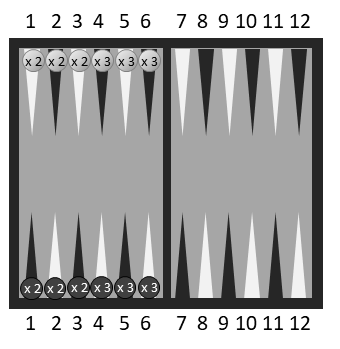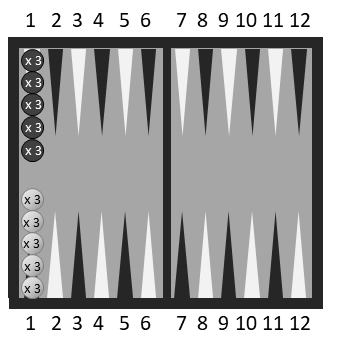|
John Taylor (poet)
John Taylor (24 August 1578 – December 1653) was an English poet who dubbed himself "The Water Poet". Biography John Taylor was born in the parish of St. Ewen's, near South Gate, Gloucester on 24 August 1578. His parentage is unknown, as the parish registers did not survive the Civil War. He did, however, attend elementary school and grammar school there. His grammar school education may have taken place at the Crypt School in Gloucester, however Taylor never finished his formal education due to difficulties with his Latin studies. In the early 1590s, after his attempt at grammar school he moved from his home to south London, probably Southwark, to begin an apprenticeship as a waterman. His occupation was one deemed unpopular by the literary elite of London. Watermen were known to be drunkards, and often gossips and liars, who attempted to cheat patrons into a higher wage for their service. This occupation would be crafted into an image for Taylor later in his career. After h ... [...More Info...] [...Related Items...] OR: [Wikipedia] [Google] [Baidu] |
Thomas Cockson
Thomas Cockson, or ''Coxon'' (bap. 1569 – fl. 1609-30 or 1636 – 1641), was one of the earliest English engravers. He left a large number of portraits engraved entirely with the graver in a neatly and finished manner. His first and most recognizable work is one for John Harington's version of Ariosto's ''Orlando Furioso'' and his latest, one depicting musketeers and pike men, which depicts on either side the coats of arms of various captains of the time. Engravings Among his works are James I, sitting in parliament, Princess Elizabeth, daughter of James I, Charles I sitting in parliament, Charles Howard, Earl of Nottingham, on horseback, George Clifford, Earl of Cumberland, on horseback, Louis XIII, Marie de Médicis, Mathias I, Emperor of Germany, Demetrius, Emperor of Russia, Concini, Marquis d'Ancre (1617), Henri Bourbon, Prince de Condé, Francis White, Dean of Carlisle (1624), Samuel Daniel, the Court Poet (1609), John Taylor, the Water Poet (title-page to his p ... [...More Info...] [...Related Items...] OR: [Wikipedia] [Google] [Baidu] |
Wherry
A wherry is a type of boat that was traditionally used for carrying cargo or passengers on rivers and canals in England, and is particularly associated with the River Thames and the River Cam. They were also used on the Broadland rivers of Norfolk and Suffolk. Regional usage in Great Britain London passenger wherries evolved into the Thames skiff, a gentleman's rowing boat. Wherries were clinker-built with long overhanging bows so that patrons could step ashore dryshod before landing stages were built along the river. It is the long angled bow that distinguishes the wherry and skiff from the gig and cutter which have steeper bows following the rise of the Royal Navy, and the building of landing stages. The use of wherries on the River Cam in Cambridge was common and is described by Daniel Defoe in his journey through England. The use of wherries on the River Cam preceded the popularity of punting by Cambridge University students. By the late 18th century, a name was giv ... [...More Info...] [...Related Items...] OR: [Wikipedia] [Google] [Baidu] |
Whist
Whist is a classic English trick-taking card game which was widely played in the 18th and 19th centuries. Although the rules are simple, there is scope for strategic play. History In 1674, '' The Complete Gamester'' described the game Ruff and Honours as the most popular descendant of Triumph played in England during the 17th century. Whist is described as a simpler, more staid, version of Ruff and Honours with the twos removed instead of having a stock. In the 18th century, Whist, played with a 52 card pack, superseded Ruff and Honours. The game takes its name from the 17th-century word ''whist'' (or ''wist'') meaning ''quiet'', ''silent'', ''attentive'', which is the root of the modern ''wistful''. Whist was first played on scientific principles by gentlemen in the Crown Coffee House in Bedford Row, London, around 1728, according to Daines Barrington. Edmond Hoyle, suspected to be a member of this group, began to tutor wealthy young gentlemen in the game and published ... [...More Info...] [...Related Items...] OR: [Wikipedia] [Google] [Baidu] |
Triumph (card Game)
Triomphe (French for triumph), once known as French ruff, is a card game dating from the late 15th century. It most likely originated in France or Spain (as triunfo) and later spread to the rest of Europe. When the game arrived in Italy, it shared a similar name with the pre-existing game and deck known as '' trionfi''; probably resulting in the latter becoming renamed as ''Tarocchi'' (tarot). While trionfi has a fifth suit that acts as permanent trumps, triomphe randomly selects one of the existing four suits as trumps. Another common feature of this game is the robbing of the stock. Triomphe became so popular that during the 16th century the earlier game of trionfi was gradually renamed tarocchi, tarot, or tarock. This game is the origin of the English word "trump" and is the ancestor of many trick-taking games like Euchre (via Écarté) and Whist (via Ruff and Honours). The earliest known description of Triomphe was of a point-trick game, perhaps one of the earliest of its type; ... [...More Info...] [...Related Items...] OR: [Wikipedia] [Google] [Baidu] |
Chess
Chess is a board game for two players. It is an abstract strategy game that involves Perfect information, no hidden information and no elements of game of chance, chance. It is played on a square chessboard, board consisting of 64 squares arranged in an 8×8 grid. The players, referred to as White and Black in chess, "White" and "Black", each control sixteen Chess piece, pieces: one king (chess), king, one queen (chess), queen, two rook (chess), rooks, two bishop (chess), bishops, two knight (chess), knights, and eight pawn (chess), pawns, with each type of piece having a different pattern of movement. An enemy piece may be captured (removed from the board) by moving one's own piece onto the square it occupies. The object of the game is to "checkmate" (threaten with inescapable capture) the enemy king. There are also several ways a game can end in a draw (chess), draw. The recorded history of chess goes back to at least the emergence of chaturanga—also thought to be an ancesto ... [...More Info...] [...Related Items...] OR: [Wikipedia] [Google] [Baidu] |
Draughts
Checkers (American English), also known as draughts (; Commonwealth English), is a group of strategy board games for two players which involve forward movements of uniform game pieces and mandatory captures by jumping over opponent pieces. Checkers is developed from alquerque. The term "checkers" derives from the checkered board which the game is played on, whereas "draughts" derives from the verb "to draw" or "to move". The most popular forms of checkers in Anglophone countries are American checkers (also called English draughts), which is played on an 8×8 checkerboard; Russian draughts, Turkish draughts and Armenian draughts, all of them on an 8×8 board; and international draughts, played on a 10×10 board – with the latter widely played in many countries worldwide. There are many other variants played on 8×8 boards. Canadian checkers and Malaysian/Singaporean checkers (also locally known as dam) are played on a 12×12 board. American checkers was weakly ... [...More Info...] [...Related Items...] OR: [Wikipedia] [Google] [Baidu] |
Doublets (tables Game)
Doublets or queen's game is a historical English tables game for two people which was popular in the 17th and 18th centuries. Although played on a board similar to that now used for backgammon, it is a simple game of chance bearing little resemblance to backgammon. Very similar games were played in mainland Europe, the earliest recorded dating to the 14th century. History Doublets may be an elaboration of the Spanish game of ''doblet'' which is described in detail in 1283 in ''El Libro de los Juegos'' published by Alfonso X of Castile.Alfonso X (1283). In 1534, a game called ''renette'' or ''reynette'' ("little queen")Fiske (1905), p. 286. appears in the list of games in Gargantua published by Rabelais. According to Cotgrave's French Dictionary of 1611, ''renette'' is "a game of tables of some resemblance with our Doublets or Queenes Game..."Cotgrave (1611). Entry for ''renette''. The name "queen's game" is recorded as early as 1554Cram, Forgeng and Johnson (2003), pp. 256 ff. ... [...More Info...] [...Related Items...] OR: [Wikipedia] [Google] [Baidu] |
Tick Tack
Ticktack or Tick-Tack, is an historical English tables game for two players using a board similar to that used today for Backgammon and other tables games. Like its much more elaborate French counterpart, Trictrac, it has the unusual feature that there are several different ways in which it can be won, including ''Toots'' and ''Rovers''. History Ticktack is mentioned as early as 1586 as a game played by English country gentlemen in inclement weather along with three other games of the tables family: Lurch, Irish and Doublets. The earliest and only comprehensive set of rules appeared in 1672 by Willughby.Willughby (1666–1672), pp. 116 ff. However, Cotton gives an overview in ''The Compleat Gamester'' of 1674, an account which was reprinted until 1754, after which the game faded from view, being reported in Halliwell-Phillips (1881) as archaic.Halliwell-Philipps (1881), p. 873. Name Willughby says that the name Ticktack came from the rule that if a man is touched, it must ... [...More Info...] [...Related Items...] OR: [Wikipedia] [Google] [Baidu] |
Irish (game)
Irish or the Irish Game was an Anglo-Scottish tables game for two players that was popular from the 16th to the mid-18th centuries before being superseded by its derivative, the "faster paced" backgammon. In its day, Irish was "esteemed among the best games at Tables." Its name notwithstanding, Irish was one of the most international forms of tables games, the equivalent of French ''toutes tables'', Italian ''tavole reale'' and Spanish ''todas tablas'',Forgeng, Johnson and Cram (2003), p. 269. the latter name first being used in the 1283 ''El Libro de los Juegos'', a translation of Arabic manuscripts by the Toledo School of Translators. The name may have been coined to distinguish it from Ludus Anglicorum, the English Game which was older. There is no evidence that it was particularly linked with Ireland, although it was played there too. History ''Irish gamyne'' is mentioned as early as 1507 being played by the Scottish king, James IV of Scotland, James IV, and was a game at wh ... [...More Info...] [...Related Items...] OR: [Wikipedia] [Google] [Baidu] |
Houghton EC
Houghton may refer to: Places Australia * Houghton, South Australia, a town near Adelaide * Houghton Highway, the longest bridge in Australia, between Redcliffe and Brisbane in Queensland * Houghton Island (Queensland) Canada * Houghton Township, Ontario, a former township in Norfolk County, Ontario New Zealand * Houghton Bay South Africa * Houghton Estate, a suburb of Johannesburg United Kingdom * Hanging Houghton, Northamptonshire *Houghton, Cambridgeshire * Houghton, Cumbria * Houghton, East Riding of Yorkshire * Houghton, Hampshire *Houghton, Norfolk *Houghton Saint Giles, Norfolk * Houghton, Northumberland, a location in the United Kingdom * Houghton, Pembrokeshire *Houghton, West Sussex *Houghton-le-Side, Darlington *Houghton-le-Spring, Sunderland * Houghton Park, Houghton-le-Spring * Houghton Bank, Darlington *Houghton Conquest, Bedfordshire *Houghton on the Hill, Leicestershire *Houghton on the Hill, Norfolk *Houghton Regis, Bedfordshire *New Houghton, Derbyshire * ... [...More Info...] [...Related Items...] OR: [Wikipedia] [Google] [Baidu] |






